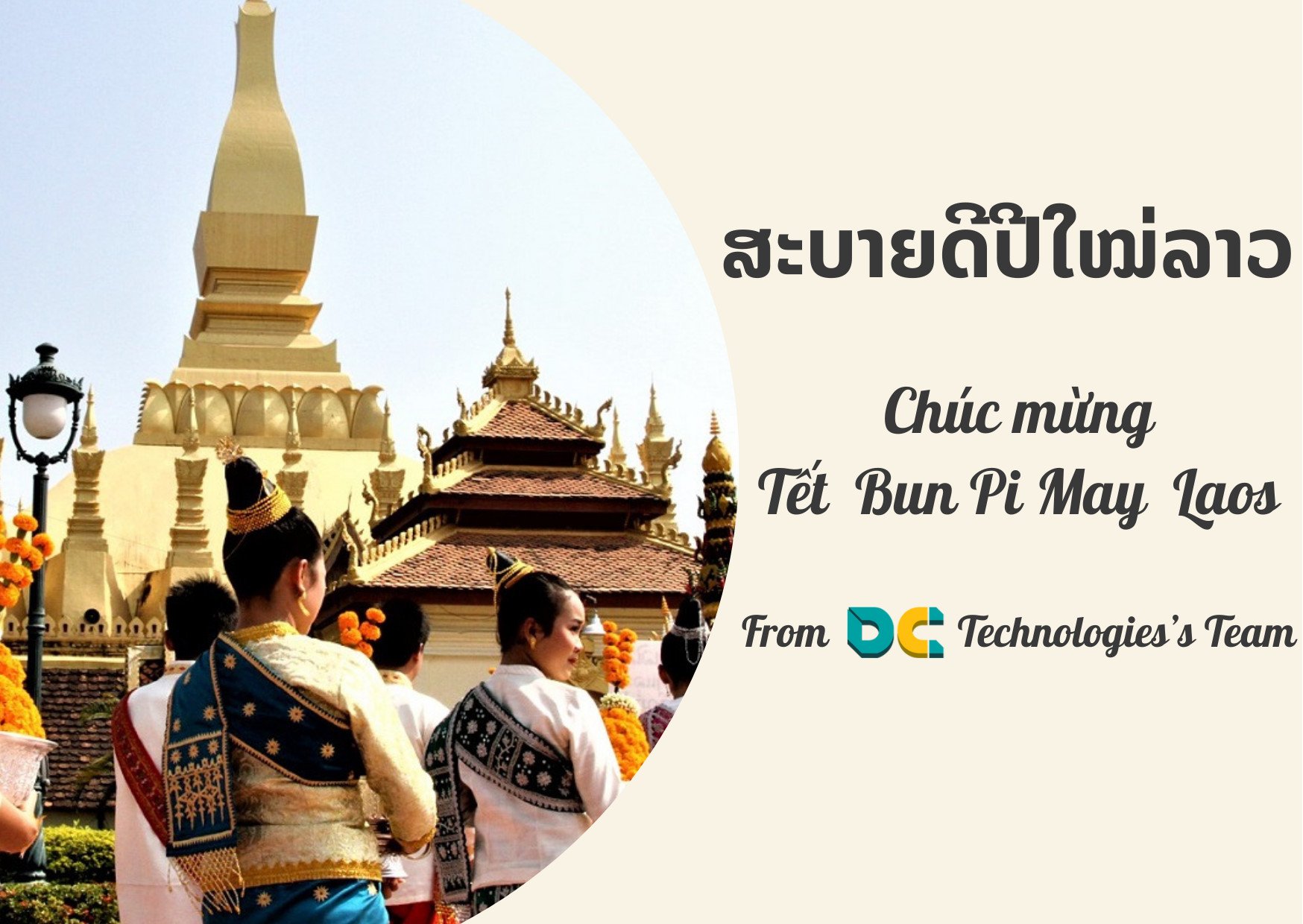News
Happy Lao Traditional New Year!
Lao New Year (Lao: ປີໃໝ່ລາວ; transliterated as Bunpimay, Pi Mai, Pee Mai, Koud Song Kane, or Bunhot Nam) takes place annually from April 14th to 16th. This is a festival based on the Buddhist calendar, as Buddhism has long been the national religion in Laos. People splash water to wish for good luck and peace throughout the year. Similar to the people of Thailand and Cambodia, the Bunpimay festival symbolizes bringing coolness, prosperity to all living things, and purity to human life, fostering happiness and well-being. Bunpimay is also an occasion to nurture and promote national artistic traditions.

Origin of the Festival
Currently, the Lao New Year is celebrated annually from April 13 to 16, during a time when the skies are clear and major rivers are full of water, symbolizing a prosperous new year.[1]
Depiction of Mythical Characters during the Festival
The Bunpimay Festival lasts for three days. The first day marks the end of the old year, during which people clean their homes and surroundings thoroughly. The second day is not counted as it is the transitional period between the old year and the new one. The festival kicks off on the final day with lively activities taking place everywhere. This last day also coincides with the end of the lunar cycle. During these three days, the Lao people have time off, refrain from working, and there are no commercial activities.
Origin of Bunpimay New Year
Initially, the Lao New Year was celebrated on the first day of January. However, this period fell in winter, making it unsuitable for the water-splashing custom, so the celebration was moved to the hottest time of the year. This is also when the daylight hours are longer than the night, with the longest day reaching up to 14 hours and 24 minutes.
According to Lao historians, the ancestors of the Lao people originated from southern China and were significantly influenced by Indian culture, adopting their system of days, months, and years. However, the Lao New Year is based on the customs of the Mon and Khmer people. The Indians valued the time when days are longer than nights, calling it "Watthanasagn," meaning "plenty of shade." At this time, the sun rises in the north, marking the start of the rainy season, which is more favorable for agriculture compared to other seasons. Additionally, the Lao New Year is also rooted in a legend involving a contest of wits between Thammabane and Kabinlaphom.
In ancient times, before the advent of Buddhism, there was a young man named Thammabane, also known as Thmmaphala, who was the son of a wealthy farmer. He was known for his quick wit and ability to understand the language of birds. Thammabane traveled widely, teaching knowledge to others.
At that time, people regarded Kabinlaphom, the god of the sky, as the wisest being. Upon hearing of Thammabane's intelligence, Kabinlaphom decided to challenge him with three questions. If Thammabane could answer correctly, Kabinlaphom would offer his own head; if not, Thammabane would lose his life.
The three questions were:
- Where is the essence of a person concentrated in the morning?
- Where is it concentrated in the afternoon?
- Where is it concentrated in the evening?
Thammabane could not answer immediately, so he requested nine more days from Kabinlaphom. He pondered the questions but still could not find the answers. On the third day, exhausted, he dozed off under a palm tree and overheard a conversation between an eagle couple. The wife eagle asked, "What will we eat tomorrow?" The husband eagle replied, "Don't worry; we will eat Thammabane because he won't be able to answer Kabinlaphom’s questions and will be killed." When the wife asked for the answers, the husband revealed:
- The essence of a person in the morning is concentrated in the face, which is why people wash their face in the morning.
- In the afternoon, it is concentrated in the chest, so people often bathe in the afternoon.
- In the evening, it is concentrated in the hands and feet, so people wash their hands and feet before going to bed.
Understanding the answers from the birds, Thammabane returned to Kabinlaphom and answered correctly. As promised, Kabinlaphom had to cut off his own head. Before doing so, he instructed his seven daughters to guard his head carefully, as if it touched the ground, it would cause a fire; if thrown into the sky, it would lead to drought; and if thrown into the sea, it would dry up the waters. The seven daughters placed their father’s head on a golden tray and kept it in Khanthoumali Cave on Phoukhaokailat Mountain. Every year, they would take turns washing their father’s head and returning it to the cave. Collectively, they were known as Nang Sangkhane.
Customs of the Bunpimay Festival
Water-Splashing Tradition
On the first day of Lao New Year, people clean their homes and prepare scented water and flowers. This fragrant water is a mixture of water, turmeric, grilled soap pod fruit, flowers, and perfume, often infused with natural floral or aromatic substances. Later, cream and powder were also added.
In the afternoon, villagers gather at the temple to perform Buddhist rituals, pray, and listen to sermons. Afterward, they parade the Buddha statue to a separate room for three days, allowing people to perform the ritual of bathing the statue. The scented water used on the statue is collected and brought home to be applied to oneself for blessings. Water is also splashed on monks, temples, and surrounding trees. Younger people show respect by splashing water on elders to wish them longevity and prosperity, while friends splash water on each other. Water is also splashed on homes, altars, animals, and farming tools. The Lao believe that water helps wash away evil, illness, and brings wishes for a long, clean, and healthy life. The wetter one gets, the happier they are believed to be.
The custom of water splashing during the Lao New Year is also influenced by the hot weather (April being the hottest month in Laos). Before splashing water, people often exchange good wishes with each other.
(Source: Wikipedia)
